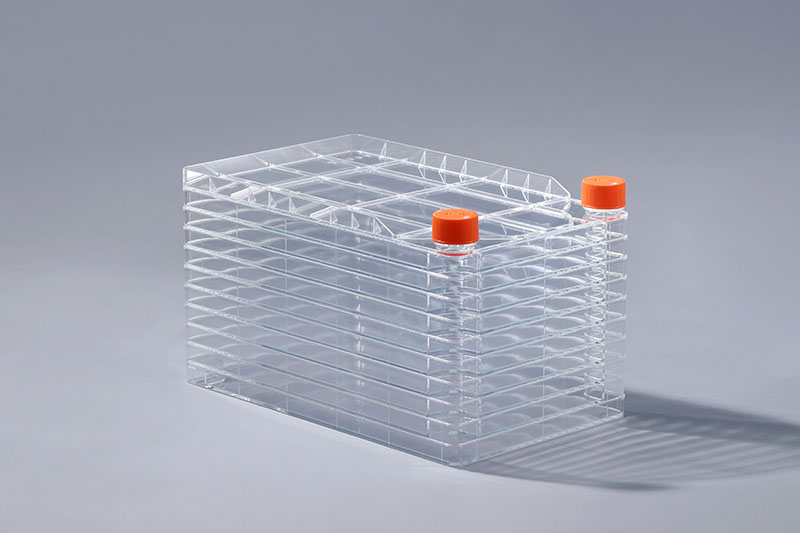Structural features of cell factories
The development of cell culture technology has been very mature so far, and it has been widely used in the preparation of monoclonal antibodies, vaccine production, scientific research and other fields. Cell culture requires the help of cell consumables. There are various types of consumables on the market. Among them, the cell factory is a kind of consumable with special structure.
Different from other bottle-type consumables, Cell Factory is a special consumable with a multi-layer structure. Common specifications include 1 layer, 2 layers, 5 layers, 10 layers, 40 layers, etc. When culturing cells, the medium is poured into the inner layers, and the cells are attached to the bottom to grow and multiply. Due to the high number of 10-layer and 40-layer layers, it is difficult to operate after adding the medium. Generally, it is used together with an automated shaker. It can realize the programming, automation and efficiency of large-scale cell culture, thereby Greatly reduce labor intensity and density.
The use of this multi-layer structure has a large culture area, which can save space, reduce manual operations, and reduce the risk of contamination. In terms of culture area, the culture area of a 10-layer cell factory is equivalent to 36 T-175 cell culture flasks. The layers are connected by a special welding process, which can ensure the stability of the internal environment and create a good growth environment for cell growth.
At present, cell factories have gradually replaced some traditional cell culture consumables and become mainstream consumables in the fields of biopharmaceuticals and scientific research. With the rapid development of the biopharmaceutical industry, the future growth space of this consumable is worth looking forward to.

评论
发表评论